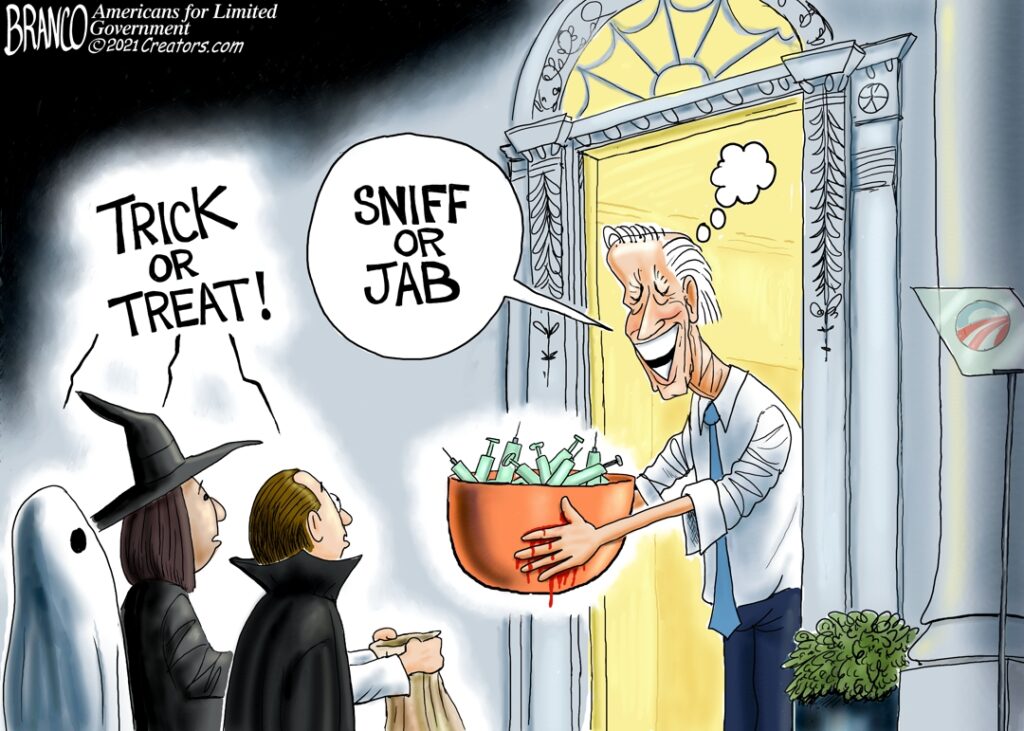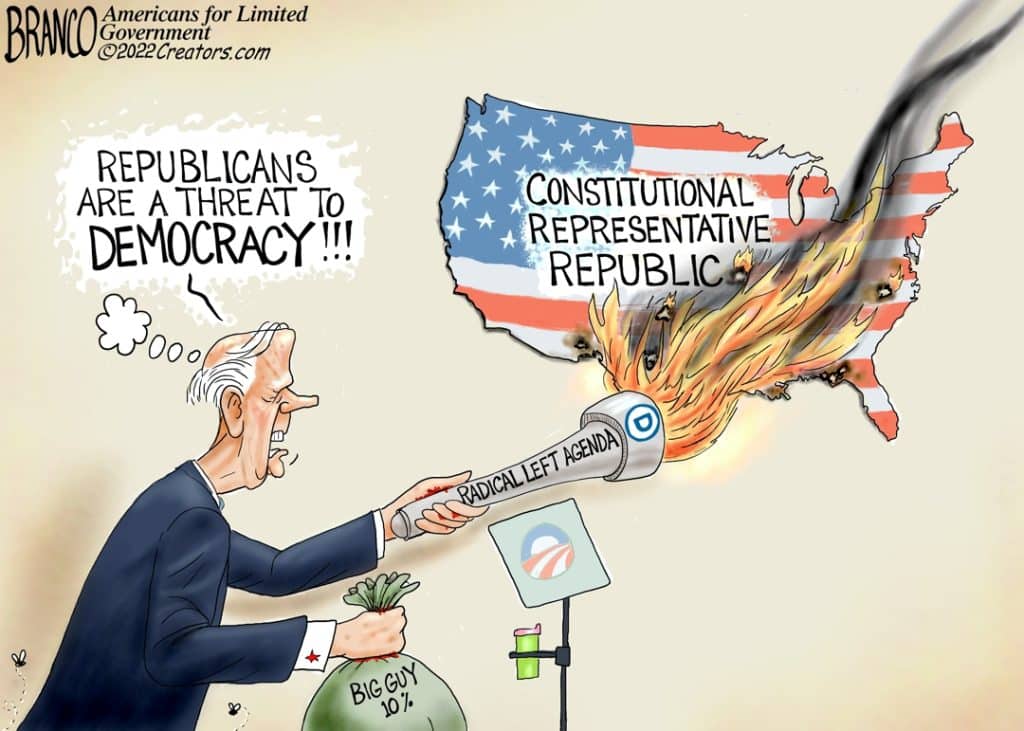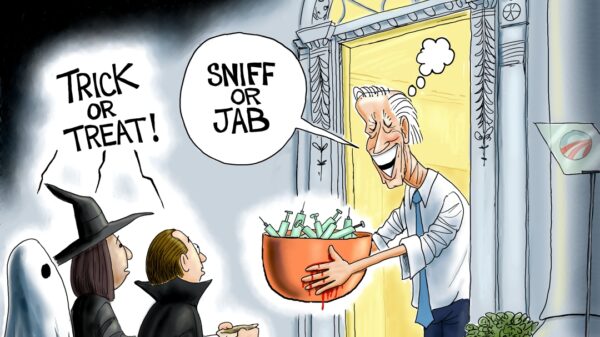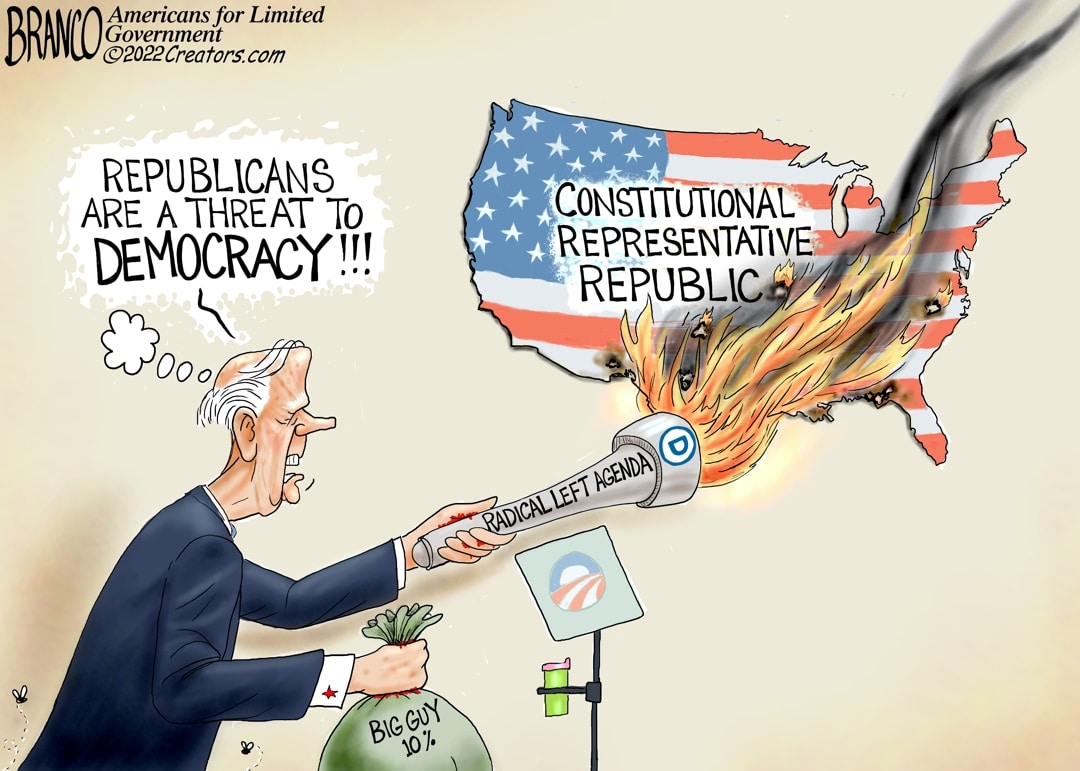September 6, 2022
Permission to republish original opeds and cartoons granted.
Halloween candy shortage scare shows importance of domestic sugar production

By Richard Manning
Most Americans don’t think about the farmers who grow our food or the government farm policies that support them – that is until they can’t find an item at the grocery store. Sugar is one of the crops that is grown in the United States, and thanks to these federal policies, is always in stock.
Last month, Hershey made news when it quickly walked back shocking comments made by its CEO Michele Buck during an earnings call. Ms. Buck had announced that there would be a shortage of Halloween candy from the company because of supply chain issues, making this Halloween all tricks and no treats.
The company quickly clarified, saying that the real problem is that their candy is too popular. “We actually anticipate high single-digit growth for our Halloween and holiday seasons,” a Hershey spokeswoman said. All of this sweet candy is helping drive an increase in profits for Hershey.
Sugar is, of course, an essential ingredient in most sweet treats. The vast majority of the sugar we eat is either grown on sugarcane or sugarbeet farms in the United States or refined from raw sugar by American cane sugar refiners.
But corporate candy companies don’t want to “Buy American” when it comes to sugar. Candy companies like Hershey have spent years lobbying Congress to weaken U.S. sugar policy and allow foreign sugar producers to flood U.S. markets with subsidized sugar.
Many conservative groups over the years have made ‘ending sugar subsidies’ an almost writ of faith. The guaranteed net effect of weakening U.S. sugar policy would be to drive U.S. sugarcane and sugarbeet farmers out of business, making the Hershey’s of the world more and more reliant on the vagaries of unreliable foreign countries for our sugar.
If Hershey is feigning concern about the supply of sugar now, imagine what will happen when they are completely reliant on cheap foreign sugar? Other countries don’t have our best interests in mind and are likely to raise prices or restrict supply once their American competitors have been destroyed. Sound familiar – think about it as you fill your gas tank. It would be much harder to produce candy if Hershey was waiting on a shipment of sugar from Brazil (remember the 70-ship traffic jam in Brazil at the start of the pandemic as Brazil worked to export sugar?).
This is exactly what happened in Europe when the E.U. in 2006 chose to drop sugar support. A 2019 report on the effects of policies that encourage foreign sugar dumping in Europe by Patrick Chatenay states, “The EU’s liberalization of its sugar industry is a lesson in unintended policy consequences: a fundamentally competitive industry is being endangered by domestic and international market distortions.”
Here at home, the lesson that policymakers should take in 2023 when considering a new Farm Bill is to vote for policies that support farmers here at home, not foreign government-subsidized producers abroad.
This Halloween, Hershey might try to scare consumers into thinking U.S. sugar policy is to blame for a disappointing Halloween haul. But the reality is that America’s sugar farmers are working hard to keep us supplied with sugar, producing about nine million tons of sugar each year.
America currently enjoys a stable, dependable, and affordable supply of sugar due to American farmers, workers, and U.S. sugar policy. Food manufacturers and American families should be thankful, and supportive of the federal policies that make that possible.
Richard Manning is the President of Americans for Limited Government.
To view online: https://www.washingtontimes.com/news/2022/sep/5/halloween-candy-shortage-scare-shows-importance-of/
Cartoon: Flame Thrower
By A.F. Branco

Click here to view a higher level resolution version.


Richard McCarty, Michael Ginsberg and Srilekha Palle: Republicans Should Bring Back College Debt Bankruptcy, And Here’s Why
By Richard McCarty, Michael Ginsberg and Srilekha Palle
For the last several years, Democrats have been running on wiping out student loan debt at taxpayer expense. On Aug. 24, President Biden finally bowed to the pressure and announced he will unilaterally “forgive” up to $20,000 worth of debt for some borrowers.
Republican candidates have generally had little to say on the subject other than to reject the government giveaway, but the problem of crippling debt remains for many Gen-Zers, Millennials, and Gen-Xers. Republicans may well be losing winnable votes over this issue, and if no plan is put forward, we can expect Democrats will eventually win the day.
What should Republicans do to address the student loan crisis? It is very simple: bring back bankruptcy for student debt for those who cannot repay their loans after several years of good-faith efforts and require that colleges repay half of their students’ discharged debt.
Nearly every college in the country accepts federal money, and if they wish to continue receiving this funding, colleges should be willing to assist in cleaning up the mess that so many of them helped create.
Fifty years ago, college debt was readily dischargeable in bankruptcy; but since then, Congress and the courts have made it more and more difficult to discharge student debt. It is past time to reverse course.
How big is the student debt crisis? Nearly 48 million Americans owe money on student loans; more than 45 million of them owe the federal government. A U.S. News poll from earlier this year found that 37 percent could not afford to make payments on these loans. Another 27 percent said they could barely afford to make their payments. If this poll is accurate, more than 15 million borrowers cannot repay their loans, and 9 million can barely afford their loan payments.
In addition to helping individual borrowers, bankruptcy for student debt would benefit American society. The U.S. News poll also found that 37 percent of those with student debt were putting off a home purchase, 32 percent were putting off saving for retirement, 19 percent were putting off starting a family, and 18 percent were putting off marriage.
Once freed from their debts, these college graduates would have an easier time settling down, starting and raising a family, and buying a home or starting a business. All of these outcomes benefit society at large and increase the likelihood that a person will hold conservative views.
Why should colleges be required to repay a portion of their students’ discharged debt? In addition to the fact that colleges have profited handsomely from the student debt crisis, they have also kept crucial pieces of information from students and parents. For example, most colleges do not disclose the average salary earned by graduates of the institution’s various degree programs. Furthermore, colleges routinely issue intentionally confusing financial aid award letters that make it difficult to discern how much a year of college costs and how much of the aid package consists of loans that must be repaid. So it should not be at all surprising when young people make poor choices based on incomplete data.
Allowing individuals with crushing student debt to discharge that debt in bankruptcy and holding colleges accountable for their students’ outcomes would transform higher education. If colleges knew they would be required to repay their students’ discharged debt, then colleges would change their ways in a hurry. They would likely pare back or jettison degree programs that provide few employment opportunities and focus on preparing students for the real world.
Colleges would also be incentivized to trim their bureaucracies, reduce costs, and work harder to ensure their students found suitable jobs after graduation. In other words, bankruptcy for college debt with a clawback provision would help align the financial interests of colleges and their students.
Biden’s plan, by contrast, simply rewards colleges’ greed and profligacy and decouples the cost of a college degree from its economic value. That colleges have failed to produce graduates capable of earning enough to pay back their loans is of no consequence; colleges get paid anyway.
Colleges now have no incentive to reassess their spending and lower tuition, as they would if they were on the hook for a portion of student debt in bankruptcy. Instead, colleges can continue to eagerly belly up to the federal loan trough and spend extravagantly on projects, programs, buildings, administrators, and amenities that have little or nothing to do with providing quality education. Colleges can go right on with degree programs that produce graduates who cannot pay back their loans.
Before Biden’s move, colleges and students may have only been working under the assumption the federal government would eventually forgive student debt. Now they know. The precedent is now set for the next student loan crisis — an inevitability so long as the federal government remains in the student loan business. The federal government will not reassess its lending habits as a private bank would. It will simply go on lending, same as before, until the next student loan crisis hits.
Nor will Biden’s plan give students or employers any reason to reconsider the economic value of a college education as compared to alternatives such as vocational training, on-the-job training, or starting a small business out of high school.
To help solve the student debt crisis, transform higher education, reduce tuitions, and improve conservatives’ electoral prospects, Republicans should support allowing student debt to be discharged in bankruptcy with a clawback provision that requires colleges to pay back half their alums’ discharged debt. Gambling and credit card debts run up by middle-aged adults are routinely discharged in bankruptcy. Why shouldn’t college debt be treated the same way?
To view online: https://thefederalist.com/2022/08/31/republicans-should-bring-back-college-debt-bankruptcy-and-heres-why/


